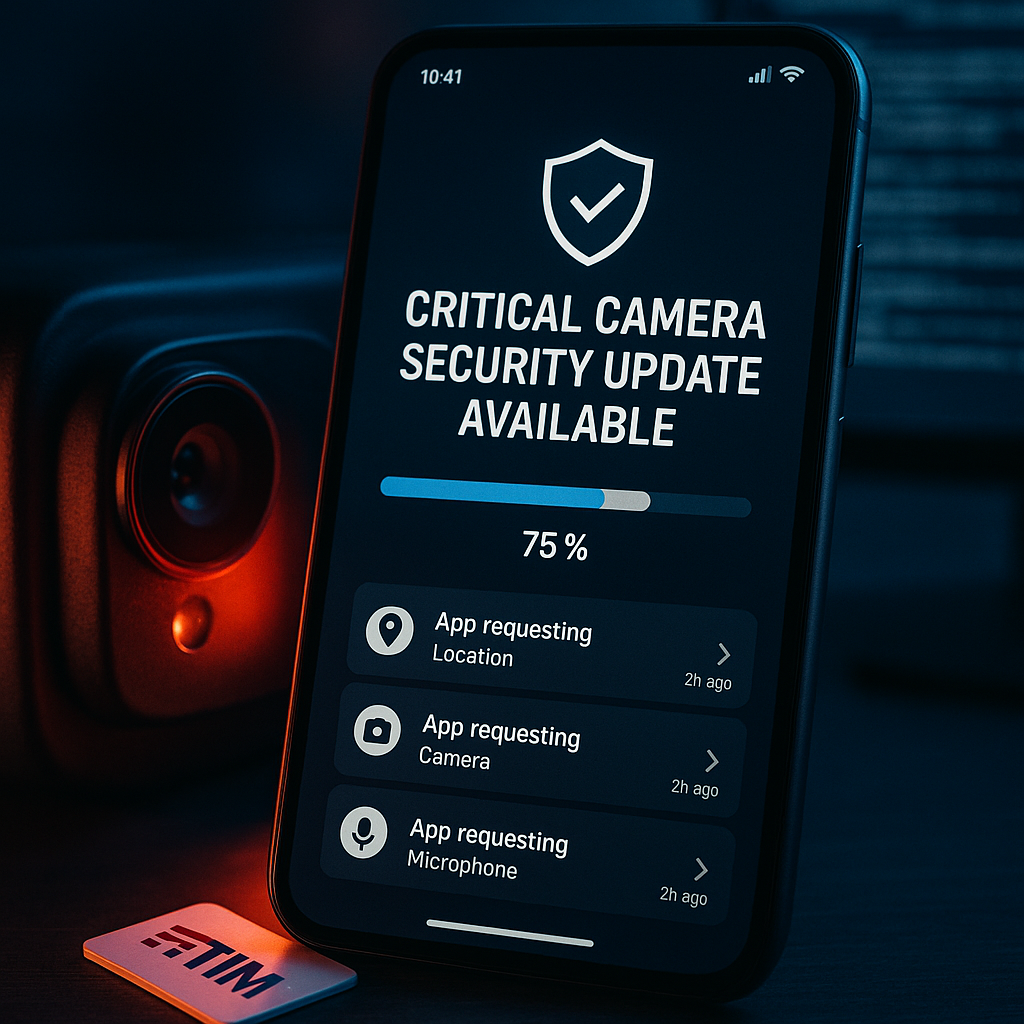Key Takeaways
In today’s digital world, keeping your accounts secure requires more than just crafting a strong password. Two-factor authentication (2FA) acts as a robust additional layer of protection and is one of the most effective, accessible ways to safeguard your personal information online. Here are the essential points to help you understand 2FA, appreciate its value, and begin using it without feeling burdened by extra steps.
- Double-Up for Strong Defense: 2FA mandates both your password and a second piece of information (such as a code sent to your phone or generated by an app), making it significantly harder for attackers to break in.
- A Range of User-Friendly Options: 2FA is available in several formats, including SMS codes, authenticator apps, hardware security keys, and biometrics. This flexibility enables you to select a method best suited to your device and lifestyle.
- Greater Security Than Passwords Alone: Even if someone obtains your password, 2FA provides a crucial barrier, drastically reducing your risk of getting hacked across email, social media, finance, and work accounts.
- Secure Your Key Accounts Quickly: Leading services like Google, Facebook, banking apps, and workplace systems all support 2FA. Activation typically takes only a couple of minutes within your account settings.
- A Small Step, Major Peace of Mind: While 2FA adds a minor step at login, it offers powerful protection against identity theft and online fraud. It quickly becomes a seamless part of your daily routine.
- Choose Your Most Secure Fit: Authenticator apps typically provide a higher level of security compared to SMS codes. For sensitive accounts, opt for app-based or hardware key 2FA whenever feasible.
- Upgrade Your Digital Security Instantly: Turning on 2FA today significantly strengthens your online defenses, even if you are not a tech expert.
By embracing two-factor authentication, you are making one of the most practical choices for stronger account protection and digital peace of mind. Next, let’s explore what 2FA is, why it is so effective, and how to set it up on the accounts that matter most to you.
Introduction
Relying on just a password is no longer enough to shield your online accounts from persistent and sophisticated cyber threats. With so much of our personal and professional lives now managed online, two-factor authentication (2FA) steps in as a straightforward but powerful enhancement to your digital security. It acts as an additional checkpoint that blocks intruders, even if your password is compromised.
Despite sounding technical, enabling 2FA is a user-friendly process thanks to modern options like text messages, apps, and biometric methods. This added layer not only fortifies your privacy but also instills confidence, letting you browse, bank, and communicate online with greater peace of mind. Let’s break down how 2FA works, why it is worth a few extra seconds, and just how simple it can be to lock down your most sensitive accounts today.
Un passo avanti. Sempre.
Unisciti al nostro canale Telegram per ricevere
aggiornamenti mirati, notizie selezionate e contenuti che fanno davvero la differenza.
Zero distrazioni, solo ciò che conta.
 Entra nel Canale
Entra nel Canale
Understanding Two-Factor Authentication (2FA)
Two-factor authentication secures your online presence by demanding two distinct forms of verification before granting access. Think of it as upgrading from a simple lock to a security door for your digital life.
Types of 2FA Methods
The strength of 2FA lies in combining different verification categories:
- Something you know: A password or PIN
- Something you have: A phone, smart card, or hardware security key
- Something you are: Biometric data, such as a fingerprint or face scan
Here are the most common 2FA methods across industries:
- SMS Text Messages
- Sends a one-time code directly to your mobile phone.
- Easily accessible; however, susceptible to SIM swapping or interception.
- Best used as a backup method rather than your main defense.
- Authenticator Apps
- Generate time-sensitive codes within an app like Google Authenticator, Microsoft Authenticator, or Authy.
- More secure than SMS, as codes are created locally and do not rely on cellular service.
- Functions offline and can sync across devices for added convenience.
- Hardware Security Keys
- Physical devices (such as YubiKey or Google Titan) that connect via USB, NFC, or Bluetooth.
- Offer maximum security, especially effective against phishing and large-scale cyber attacks.
- Require carrying a separate device, making them ideal for banking, enterprise, and healthcare applications.
- Biometric Authentication
- Uses inherent physical characteristics, including fingerprints, facial recognition, or voice identification.
- Quick and highly user-friendly, though some platforms and apps may not support all biometric options.
These methods are now standard across a variety of fields, from finance (protecting online banking) and healthcare (securing patient portals) to education (accessing student records) and legal processes (guarding confidential documents). This usability paves the way for flexible adoption, tailored to your needs.
Choosing the Right 2FA Method
With multiple 2FA options available, it’s important to weigh your security needs against convenience.
Security vs. Convenience Trade-Offs
Key considerations for choosing the right method:
-
Security Level Needed
-
Financial, healthcare, or legal accounts demand the highest security; hardware keys or strong authenticator apps are preferred.
-
Social platforms and entertainment services may be sufficiently protected with app-based or SMS codes.
-
Educational and professional accounts might have specific guidelines or requirements depending on compliance standards.
-
Ease of Use
-
Authenticator apps strike a strong balance between security and convenience for everyday use.
-
Hardware security keys offer robust protection but necessitate carrying and accessing a physical device.
-
Biometric solutions (where supported) provide quick, effortless authentication, improving both accessibility and speed.
Best Practices for Different Account Types
High-Security or Sensitive Accounts (e.g., banking, healthcare, workplace systems):
- Employ hardware security keys as the primary method, paired with authenticator apps as a backup.
- Avoid relying solely on SMS, particularly if sensitive data or large funds are at risk.
- Store backup codes in a secure, offline location.
Everyday Use Accounts (e.g., shopping, streaming, educational portals):
- Utilize authenticator apps for a strong blend of security and ease.
- Enable biometric features for app logins when available on your device.
- Maintain backup options in case your primary device is lost or unavailable.
Social, Entertainment, and Consumer Accounts:
- SMS codes are suitable for accounts with lower risk but enable app-based authentication if offered.
- Consider using a password manager that integrates with 2FA for simplified access.
- Review account activity periodically to quickly spot unauthorized access.
These recommendations apply across various industries and personal uses, ensuring a well-rounded digital security framework.
Is 2FA Worth the Extra Login Time?
While some might perceive 2FA as an obstacle, the added step is minimal compared to its security advantages.
Time Investment Analysis
- Authenticator Apps: Typically require just 2–3 seconds to open the app and input the code.
- Biometric Verification: Instantaneous, with most logins completing in under one second.
- Hardware Security Keys: Usually 2–4 seconds to insert the key or activate via NFC/Bluetooth.
- SMS Codes: May take a few extra seconds waiting for a text, but offer broad compatibility.
Security Benefits Across Industries
- 99.9% reduction in automated attacks on accounts with 2FA enabled, regardless of the sector.
- Businesses in finance and healthcare report significant drops in credential-related breaches after adopting 2FA.
- Educational institutions see improved protection of student and staff information with mandatory 2FA.
- Marketing firms and retailers reduce incidents of account compromise and safeguard customer data, enhancing overall consumer trust.
- Average account recovery consumes 4–6 hours if 2FA is not in place, while identity theft can result in financial damages upwards of $12,000 per incident.
The time saved by avoiding account recovery and the potential headache of a breach makes 2FA well worth the minor daily investment.
Setting Up 2FA on Popular Platforms
Enabling 2FA is easier than ever, with most major services providing straightforward setup procedures.
Step-by-Step Implementation
Google Accounts:
- Go to your account’s Security settings.
- Select “2-Step Verification.”
- Pick a verification method: SMS, authenticator app, hardware key, or prompt.
- Follow on-screen instructions to complete setup.
- Store your backup codes safely.
Social Media Platforms (e.g., Facebook, Instagram, Twitter/X):
- Access account Security or Privacy settings.
- Find the “Two-Factor Authentication” or “Login Security” section.
- Choose your preferred method, such as SMS, app, or hardware key.
- Save backup or recovery codes in a protected location.
Financial Institutions and Apps:
Un passo avanti. Sempre.
Unisciti al nostro canale Telegram per ricevere
aggiornamenti mirati, notizie selezionate e contenuti che fanno davvero la differenza.
Zero distrazioni, solo ciò che conta.
 Entra nel Canale
Entra nel Canale
- Log into account settings and navigate to security options.
- Select multi-factor authentication, often prompted by the institution.
- Follow instructions to link your device or hardware key.
- Confirm recovery contacts are up-to-date.
Workplace and Educational Accounts:
- Many organizations mandate 2FA; follow IT-provided instructions for setup.
- Typically, this involves registering your authenticator app or hardware token, and verifying by email, phone, or direct prompt.
- Ensure you understand internal recovery processes for lost credentials.
Managing Multiple 2FA-Enabled Accounts
To keep your digital life organized as you enable 2FA across platforms, consider the following:
- Use a reputable password manager that supports secure storage and autofill of 2FA tokens.
- Store backup codes offline or in encrypted digital storage.
- Regularly update recovery email addresses and phone numbers.
- Schedule periodic audits to confirm all critical accounts have 2FA enabled and recovery options are current.
By centralizing your credentials and backup solutions, you greatly reduce the risk of getting locked out, while maintaining strong security for professional, financial, educational, and consumer accounts alike.
Troubleshooting Common 2FA Issues
Despite its many benefits, 2FA occasionally presents access challenges. Here’s how to resolve issues and prevent future headaches.
Lost Access Solutions
If you lose access to your second authentication factor:
- Retrieve previously saved backup codes.
- Contact platform support and provide required identity verification.
- Access your account from a pre-authorized or trusted device if available.
- Use your recovery email or phone number to restore access.
Prevention Strategies
To avoid losing access in the future:
- Store backup codes in multiple secure locations (digital vaults, paper copies in locked spaces).
- Register multiple 2FA methods when supported (app paired with hardware key, for instance).
- Keep your recovery and contact information up-to-date across all platforms.
- Test your account recovery process periodically to confirm it works as expected.
These practices are essential for professionals, parents, students, and small business owners alike, ensuring you’re never unnecessarily locked out while still benefiting from top-tier security.
Conclusion
Two-factor authentication remains one of the simplest yet most formidable defenses against cyber threats, fortifying your accounts with an essential second line of protection. Understanding the distinct features of SMS codes, authenticator apps, biometrics, and hardware keys empowers you to select the ideal solution for each account. You can secure sensitive data in business, finance, healthcare, education, and beyond while maintaining ease of daily use.
Mastering best practices, such as organizing backup codes and routinely reviewing your settings, transforms 2FA from a one-time setup task into an ongoing habit. This approach steadily strengthens your personal and professional digital environments. As platforms and services continue to streamline secure authentication, making 2FA a universal standard, adopting it now is more than a smart move; it is foundational for digital safety.
Looking ahead, the landscape of cybersecurity will only become more complex and critical. By enabling 2FA today, you lay the groundwork for future readiness, protect your assets across industries, and set a proactive example for family, colleagues, and peers. The true question is not whether you will embrace stronger digital safeguards, but how effectively you will leverage them to stay ahead in an ever-evolving online world. Your commitment to vigilance today ensures resilience and confidence for the digital challenges of tomorrow.





Leave a Reply